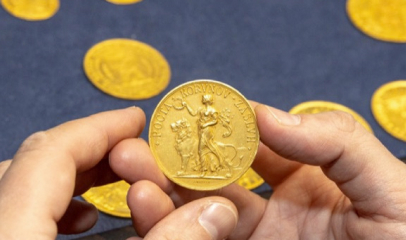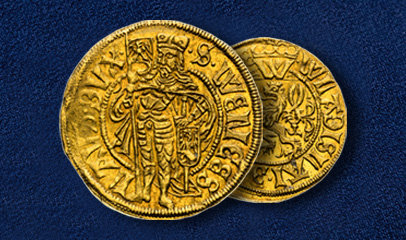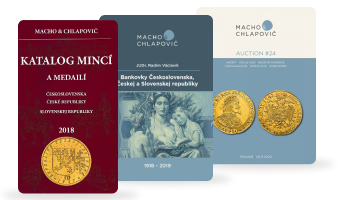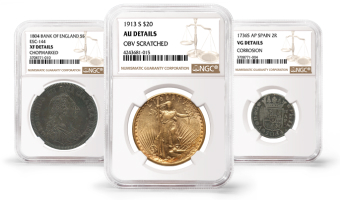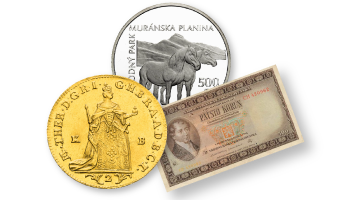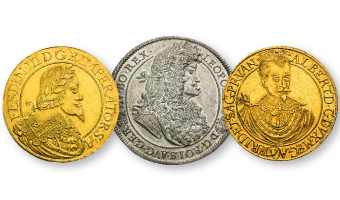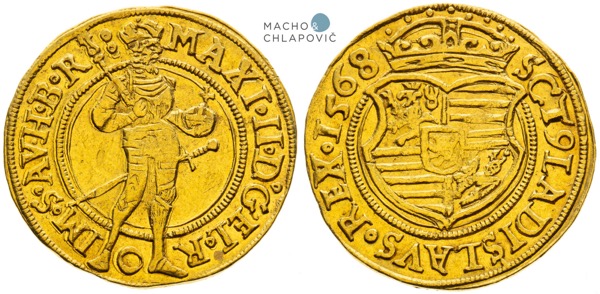
The New Era of the Mint in Prague
In the second half of the 1550s, a new royal mint was established in Prague. The prosperity of this mint was to be based on silver deliveries from various mining areas, with the exception of Joachimsthal and Kutná Hora, where royal mints were already processing local ore. Unlike the period of Sauermann’s minting at the turn of the 1530s and 1540s, these silver deliveries were ensured by royal decree – from Stříbrná Skalice, Nalžovské Hory, Ratibořské Hory, Březové Hory, the mining district of Rudolfov, and Niklasberg in the Ore Mountains. These sources provided the foundation for a rather extensive coinage of thalers and sixty-kreuzers at the end of Ferdinand’s reign.
Gold as a Scarce Metal
The Prague mint lacked a stable gold supply even in this period. Occasional purchase of pagament remained the only option. It appears that the amount of gold acquired during this time was negatively affected by the rising price of the metal on the European market. The quantity purchased dropped to a long-term minimum. Ducats were minted only exceptionally and in utterly negligible quantities. Ducats from this era therefore rank among the rarest Bohemian gold coinages. Such a coin is, without doubt, the unique Prague ducat of 1561, to be auctioned as lot no. 59. It was struck using dies engraved by the Linz engraver Mates Doctor.
Lot 59. Ducat 1561. Prague
Ducat 1561. Prague. Single-year type! Mint lustre in fields. Missing in the Wiener Münzkabinett collection! Unique!
Grade: good EF | good EF — Starting price: €40,000
Rare Ducats from 1568 – Nickl Milicz and Jiřík of Řásná
Another well-preserved and very interesting coin from the Kokolus Collection is the rare and unique ducat of 1568. It will be offered in two examples under lots 260 and 261. The ducats were struck with dies produced in Joachimsthal by the goldsmith Nickl Milicz. He supplied dies to the Joachimsthal mint for several decades and became famous as a renowned maker of religious medals.
After the mid-1560s, the Prague mint also began to order dies from Nickl Milicz. In addition to occasional ducat coinage, his dies were also used for the production of Prague sixty-kreuzers and smaller two- and one-kreuzer coins. He was not the only one. From the mid-1560s, another renowned goldsmith, Jiřík of Řásná from Kutná Hora, also supplied dies to the Prague mint. The dies of both masters were used in various combinations, resulting in numerous crossover coinages that bear artistic traits of both engravers.
The Mint Reform and the End of an Era
After the establishment of the mint in České Budějovice, the Prague mint lost access to its most productive source of raw material – the mining district of Rudolfov. From the second half of 1569, only small silver coins were minted in Prague, until the monetary reform of 1573.
During the years 1573 and 1574, older coin types were re-coined, and silver minting increased significantly. During this period, the Prague mint ordered all new dies for the recoinage from Jiřík of Řásná in Kutná Hora – his artistic style thus appears on the rare Prague ducat of 1574 as well.
Lot 260. Ducat 1568. Prague
Minor flan defect. Somewhat weakly struck. Mint lustre in fields. Slightly wavy strike. Missing in the Wiener Münzkabinett collection! Extremely rare!
Grade: EF | good EF — Starting price: €60,000
RRR! → 2 pcs/mkt
Lot 261. Ducat 1568. Prague
Mint lustre in fields. Nice patina. Slightly wavy. Smoothed fields on obverse, between ruler’s legs. Somewhat weakly struck. This coin is illustrated in H.A. Dietiker’s Kleine böhmische Münzgeschichte, fig. 247 and also in Böhmen – Katalog der Habsburger Münzen (1526 bis 1887). Missing in the Wiener Münzkabinett collection! Extremely rare!
Grade: about EF | EF — Starting price: €60,000
RRR! → 2 pcs/mkt
Related article


